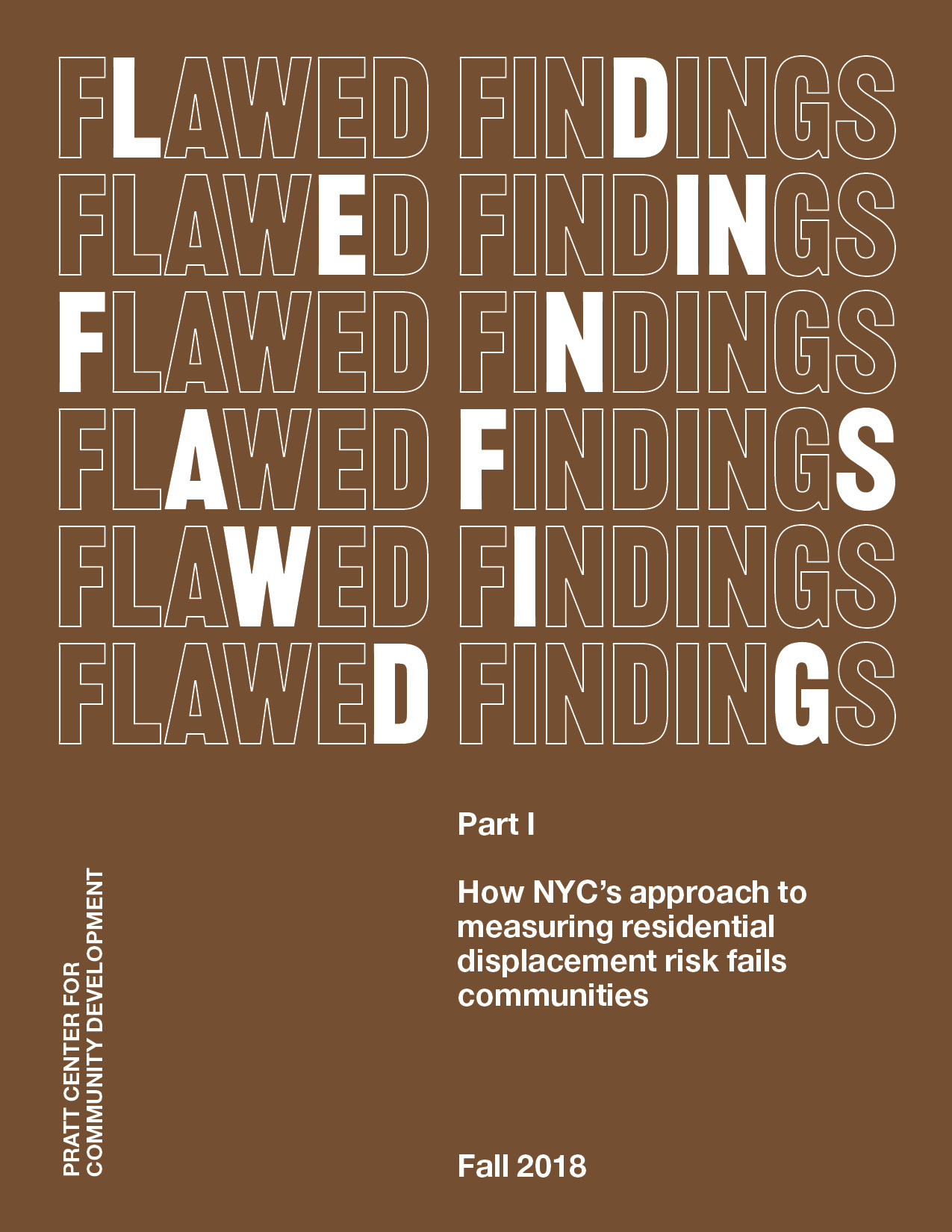
Pratt Center Research
 Democratizing Planning
Democratizing PlanningFlawed Findings Part I: How NYC's Approach to Measuring Residential Displacement Risk Fails Communities
Report | September 18, 2018
Communities across the city are grappling with rising housing costs and justified fears that residents will no longer be able to afford to live in their neighborhoods. These concerns are particularly deep when displacement pressure stems from City-initiated projects, such as the rezonings approved as part of the de Blasio Administration’s Housing New York policy in East New York, East Harlem, Jerome Avenue, Downtown Far Rockaway and Inwood. Developing a nuanced understanding of the issue and how the City calculates the risk of indirect residential displacement—the involuntary movement of residents due to changes in socioeconomic conditions, primarily rising housing costs—is critical to an effective policy response.
The City’s sole vehicle to formally measure displacement risk is through the project-specific City Environmental Quality Review (CEQR) process and its associated CEQR Technical Manual. Yet a careful review of the CEQR Technical Manual’s guidance on how indirect residential displacement impacts are calculated reveals a distressing finding: the Technical Manual’s step-by-step methodology is based on a series of unjustified assumptions that easily lead to minimizing vulnerability and therefore, a finding of no significant adverse impact to the existing community.
Findings
The City’s official environmental review of indirect residential displacement fails to adequately approximate the scale and extent of the potential threat through four major flaws:
- The analysis dismisses the potential for inequitable impacts by race and ethnicity.
- Only low-income tenants living in 1-4 unit buildings are considered vulnerable to displacement, neglecting residents in larger buildings from the analysis.
- The potential for displacement in gentrifying neighborhoods is unequivocally dismissed.
- Environmental Impact Statement authors have wide discretion on determining a finding of significant impact, even if stated thresholds are exceeded, particularly for actions that include Mandatory Inclusionary Housing (MIH).
Recommendations
These flaws result in community after community having to unfairly bear the burden of undisclosed and unaddressed displacement pressure. As such, Pratt Center recommends the following:
- NYC should conduct a citywide displacement risk analysis and use it to inform housing and development policy.
- NYC should adopt a comprehensive anti-displacement policy agenda with a no net loss of affordable units as a key goal.
- NYC should convene a Task Force of technical and community experts to revamp the CEQR Technical Manual’s approach to evaluating residential displacement.
The time is long overdue for a frank discussion of how the City calculates and addresses displacement. The current approach is unjust and woefully inadequate. If we strive for a truly equitable city where all people—regardless of race or income—have access to quality housing and sustainable communities, then it is imperative we begin this endeavor.


